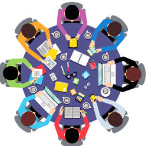Understanding Design Thinking: Key Leadership and Customer Insights
Written on
Chapter 1: The Essentials of Design Leadership
In the realm of design thinking, effective leadership is crucial for steering a team toward success. Leaders can adopt various styles, from guiding and motivating their teams to actively facilitating progress. However, a successful leader in a design thinking context should embody four essential qualities.
The first quality is the ability to articulate a problem clearly, using the information at hand. The second quality is fostering a culture of experimentation. During prototyping, emphasis should be placed on tackling complex features first while adopting a fail-fast approach. The third quality is the capacity to communicate ideas effectively. A strong leader encourages diverse contributions from team members and facilitates the sharing of these ideas for collective development. Lastly, collaboration is key; leaders must engage actively with their teams to address challenges, ensuring they are accessible and supportive.
Building the Team
A competent leader must identify the specific skills necessary for their team’s success. Often, teams become so engrossed in user needs and problem-solving that they overlook the importance of understanding their colleagues—their skills, expectations, and contributions.
Team Leap Activity

The Team Leap activity is designed to foster trust and empathy among team members. Spanning roughly an hour, this exercise encourages participants to explore individual goals, working styles, and personal preferences. Typically conducted at the onset of a project, especially when integrating new members, this activity aids in establishing comfortable workplace norms.
The Common Goal
Diverse skill sets within a team contribute to various aspects of problem-solving. It is the responsibility of the team leader to define a shared objective that all members can rally around. This alignment helps maintain focus on the overarching goal, preventing distractions. The team should collaboratively agree on the problem statement and the rationale for addressing it, laying the groundwork for effective design-thinking collaboration. The "Mission Countdown" technique helps streamline this process, allowing the team to distill their problem statement into four key aspects: what, why, how, and for whom. This concise statement serves as a vital reference throughout the problem-solving journey.

Understanding Customer Experience

Customer Experience (CX) encompasses the entire spectrum of interactions a customer has with an organization over time, spanning various touchpoints such as websites, apps, customer service, and physical stores. The nature of these interactions significantly influences customer loyalty to a brand.
Components of Customer Experience
To grasp the essence of Customer Experience, one must recognize its four fundamental components: Archetypes, Activities, Interactions, and Principles.
Archetypes refer to common behaviors, attitudes, and motivations that people associate with brands or products. Businesses utilize archetypes to empathize with customers and enhance CX design. For instance, Apple is often linked to creativity, while Nike embodies the hero archetype. When developing archetypes, organizations should prioritize higher-order needs such as belonging and self-fulfillment, which are crucial for fostering trust and long-term customer relationships.
Activities capture the customer’s actions and objectives throughout their entire experience. A holistic understanding of the customer journey is essential for creating a stellar customer experience. For example, when visiting a theme park, customers make numerous decisions even before they arrive. Companies like Disney and Universal Studios should consider these logistical aspects when mapping out the customer journey.
Strengthening Customer Relationships
The robustness of customer relationships is determined by the quality and frequency of interactions. A relationship framework can help assess these dynamics by focusing on three key dimensions: breadth, depth, and consistency.
- Breadth refers to how often an organization engages with customers. Frequent, meaningful interactions enhance breadth while avoiding unnecessary communications.
- Depth pertains to the significance of these interactions, addressing emotional and higher-order customer needs, which is vital for developing archetypes.
- Consistency relates to the reliability of interactions. Customers expect uniformity in assistance regardless of the context, similar to human relationships.

Conclusion
In this article, I have provided an overview of the fundamental aspects of Design Thinking, with a focus on leadership qualities and customer experience. Stay tuned for more insights in the upcoming chapters as we delve deeper into the world of Design Thinking. Your feedback is appreciated, and I hope you found this article enjoyable.
Subscribe to stay updated on the latest insightful stories delivered directly to your inbox!